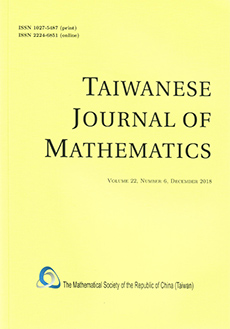Abstract
This investigation studies the nonemptiness problems of Wang cubes with two colors. Wang cubes are unit cubes with colored faces, which are generalized from Wang tiles. For a set $B$ of Wang cubs, $\Sigma(B)$ is the set of all global patterns on $\mathbb{Z}^3$ that can be constructed by the cubes in $B$. The nonemptiness problem is to determine whether $\Sigma(B) \neq \emptyset$ or not. Denote by $\mathcal{P}(B)$ the set of all periodic patterns on $\mathbb{Z}^3$ that can be constructed by the cubes in $B$. For Wang cubes, the corresponding Wang's conjecture is that if $\Sigma(B) \neq \emptyset$, then $\mathcal{P}(B) \neq \emptyset$.
We introduce the transition matrices and trace operators to determine whether $\Sigma(B) \neq \emptyset$ and $\mathcal{P}(B) \neq \emptyset$ or not, respectively. A basic set $B$ is called a minimal cycle generator if $\mathcal{P}(B) \neq \emptyset$ but $\mathcal{P}(B') = \emptyset$ for all $B' \subsetneqq B$. By computer computation, there exist $86$ equivalence classes of minimal cycle generators with two colors. By verifying that the basic sets $B$ that contains no minimal cycle generators satisfy $\Sigma(B) = \emptyset$, we prove that the Wang's conjecture for Wang cubes with two colors is true.
Citation
Hung-Hsun Chen. Wen-Guei Hu. Song-Sun Lin. "Nonemptiness Problems of Wang Cubes with Two Colors." Taiwanese J. Math. 24 (6) 1529 - 1549, December, 2020. https://doi.org/10.11650/tjm/200304
Information





